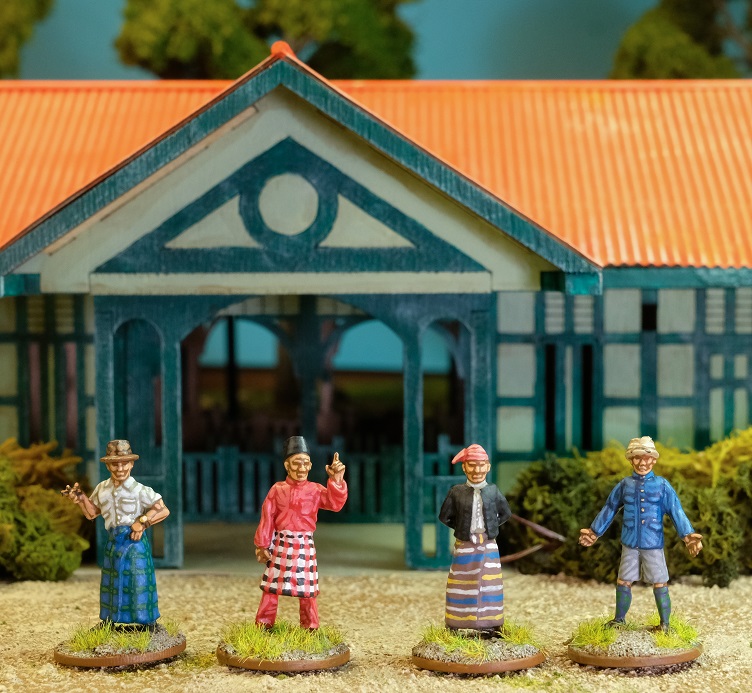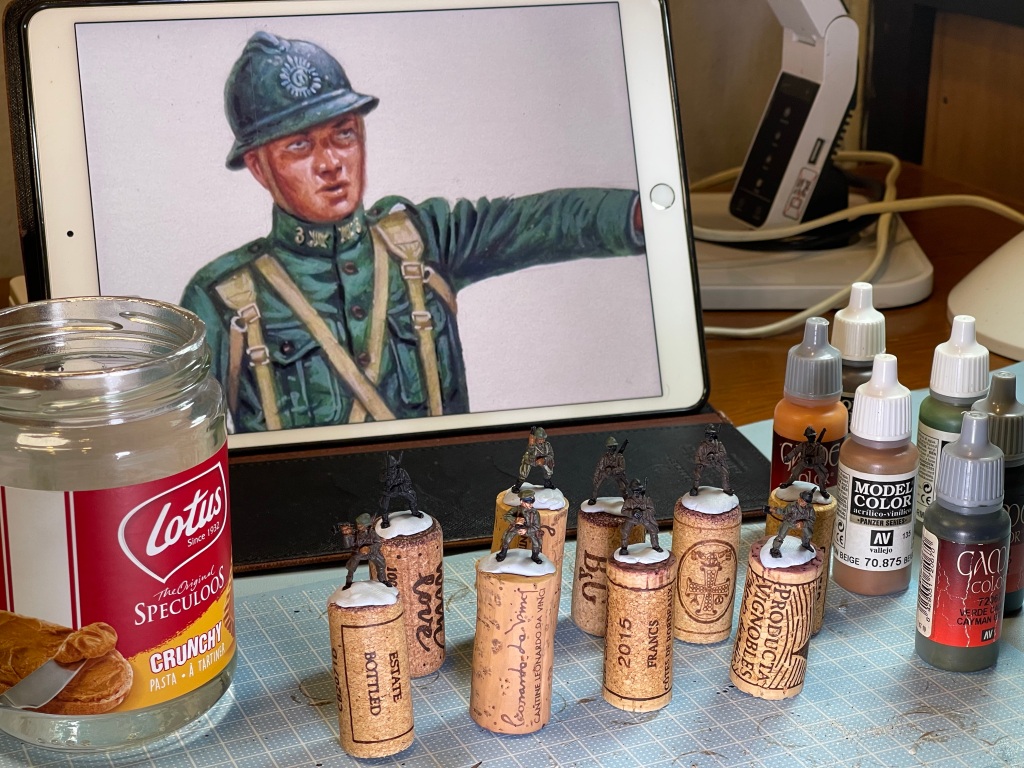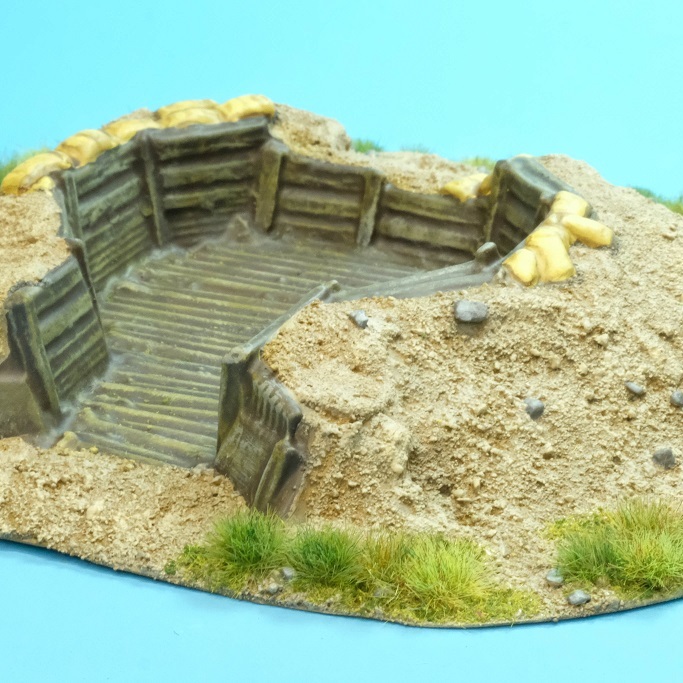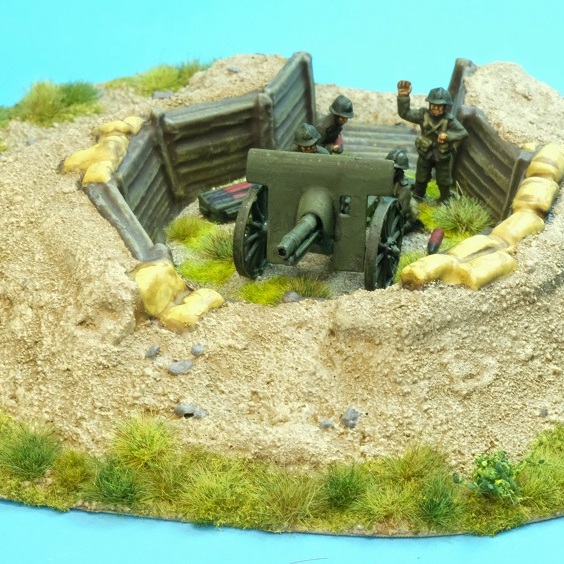If you’re ever bereft of ideas for how to spend your ill-gotten cryptocurrency profits, I’d recommend commissioning a line of wargaming miniatures. It’s a lot less crass than a Panerai, and just as functional. That is, if utility is to be measured by the number of hours derived from painting and playing with little bobs of lead. For it is deeply satisfying — therapeutically so — to see a figure made in the pose and clothes you specified. There’s also the added benefit of topping up your karma, as sponsoring a range is the highest form of altruism a couchbound gamer can engage in, short of giving away his entire painted collection for free. Because thanks to you, kindred spirits in locales as diverse and far-flung as Bowling Green and Fremantle will also be able to enrich their lead piles with hitherto unavailable troop types.
Or at least that’s how I have rationalised my paying the proprietor of Elhiem Figures to tailor-make me a range of tropical civilians for the 1940s. Which as a mental exercise is really unnecessary when assessed next to the tidy sums I used to spend on craft beers and equally overpriced cocktails each week in the pre-pandemic age.
While these will be hitting my tabletop as Thai home guard volunteers for use against Vichy raiders and Japanese invaders, they are also spot-on for a wide gamut of historical forces, from pro-Japanese auxiliaries and anti-Japanese guerrillas to post-war nationalist militias, to say nothing of their obvious Pulp potential for adventures on the Amazon or Yangtze.
Take, for example, the Burma Independence Army, who figured frequently in the 1942 campaign not just as scouts but also fighting men in their own right (though a prolonged brush with the 4/12th Frontier Force Regiment near Shwedaung apparently resulted in their avoiding pitched battles with the retreating British from then onwards).
Or the Viet Minh at war’s end, when they fought the occupying British and returning French whilst steering clear of the Nationalist Chinese who descended on Indochina not so much to disarm the Japanese as to pillage whatever remained of the famine-ravaged economy (see here for a truly fascinating photo set of Saigon in 1945 when Leclerc’s formerly Free French hung out with Gurkhas and the recently surrendered but re-armed Japanese).
Or even Sukarno’s nationalists, who clashed with Indian troops and killed a British brigadier that same year as part of the bloody prelude to a protracted four-year war of independence against the Dutch (who were attired just as mongrely as their colonialist brethren in Tonkin).
The gentlemen pistoleers feature a fellow in fedora inspired by the prissy General Giap as he appeared during the heady days of the August Revolution (see the leftmost photo in the top row below). The other two figures were based on pictures taken in late 1930s Siam and wartime Thailand, though identical outfits were worn by Europeans and natives alike elsewhere in the region.
The all white suit may have disappeared from everyday life, but up until the early 60s it very much dominated the menswear scene in the tropics. Not owning any Napoleonic Austrians, I found painting them a complete novelty. Vallejo Model Colour Sky Grey was employed as the base for the Giap figure and VMC Stone Grey for the chap sporting the Bombay Bowler (note to self: the leather straps atop his helmet features VGC Charred Brown and an overlay of VGC Parasite Brown). I can’t say these have come out successfully in terms of conveying dapperness and class. One lesson definitely learnt is that the dictum of “less is more” applies especially to any attempt at painting white; not every fold or crease needs to be accentuated.
The figures’ civilian clothing provided a rare opportunity to play with bright colours outside of my usual repertoire. This proved a highly enlightening experience in the sense that it confirmed what I had long suspected, namely that us longtime painters possess an intuitive knowledge of what works and what doesn’t in the same way that experienced cooks know when and when not to add lemon zest or fish sauce to a dish. Not once did I have to brush on a corrective or redo an entire part. A case in point is the toff firing his revolver whose suit jacket was given a basecoat of Vallejo Game Colour Charred Brown followed by a highlight of VGC Terracota (a colour I almost never use) and whose socks were painted with VMC Ochre Brown and a second coat of VMC Golden Yellow. Both are combinations I had made up entirely on my own with nary an online precedent to emulate.
I also took the opportunity to try out a technique favoured by celebrity painters which I have long eschewed as too time consuming and unpredictable (I like my uniforms to be unrealistically uniform, thank you very much), namely the mixing of colours for successive shades. As a dye-in-the-wool adherent of the Dallimore method, my personal approach to shading is rooted in the wham-bam-thank-you-ma’am process of slapping on different paints atop one another. None of that blending madness serious modellers are so enamoured of for me! Though I should point out that by opportunity I actually meant necessity, as I have very little in the way of non-khaki hues and so had to mix up my own concoctions of crimson and pink.
Another departure from standard procedure was my choice to do the figures individually as opposed to painting them as a group in a factory line, one colour at a time. Necessity again dictated this, as it was more the lack of uniformity rather than any desire to experiment. Oddly enough I didn’t feel any sense of achievement the way John of Just Needs Varnish! did in doing things this way. If anything, I thought I was accomplishing very little at the end of each session!
So I was feeling a tad self-indulgent and also requested Matt to design some unarmed townsfolk in what is today seen as national costumes. He duly complied, and the results are nothing short of stellar. The Burmese gentleman I have made a barrister by painting his jacket black in imitation of the hordes of lawyers I always encountered milling around the municipal courthouse and the old High Court on visits to Yangon. Colours for the Malay blowhard was copied outright from a King & Country figurine available in their charming Streets of Old Hong Kong range while the longyi of the cheroot-toting Burmese bully was given a pattern I devised out of my own imagination, any resemblance to a Scottish clan’s tartan being purely coincidental. The Siamese worrywart constitutes my biggest disappointment of the lot, however, as I made an absolute dog’s dinner of his socks (note to self: never attempt an argyle pattern!). I should have also gone with a louder colour such as purple or yellow for the silk jacket, come to think of it. But hey, you live and learn.
Least successful of all was the varnishing, which still produced a bit of a sheen under intense lighting despite my best efforts. I have heard very good things about AK Interaktive’s Ultra Matte varnish, so perhaps therein lies salvation. So stay tuned for the next post to see my sampling of it!





























































































